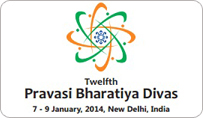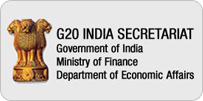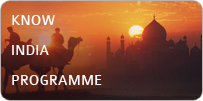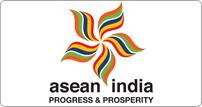Introduction:
India and Australia have several commonalities, which serve as a foundation for closer cooperation and multifaceted interaction. Both are strong, vibrant, secular and multicultural democracies. They both have a free press and an independent judicial system; the English language is an important link. Cricket is a significant element in awareness at the popular level.
Historical Contacts:
India and Australia have commercial ties dating back to the 18th century, when India played a central role in nourishing the young colony and trade with Australia came to be an important element in the operations of the East India Company in Bengal. In 1792, in only the fourth year of the infant penal colony, when the supply ship ‘Guardian’ sank leaving the colony without supplies, it was to Calcutta that the Governor looked for immediate help in dispatching the 'Atlantic' to bring back all the food and stores it could carry. The 'Atlantic' returned, with a cargo of rice, wheat and lentils. Australia's first shipments of coal were to Bengal in 1799, from Newcastle.
For the next half century, Australia's most immediate and direct links were with India rather than London, as bureaucrats, merchants, chaplains and judges, moved between the two colonies. By 1840 a ship was leaving Sydney for India roughly every four days, and merchants in Calcutta grew rich from supplying the new outpost.
India was an important source of food and provisions for Australia; it was also a source of retired 'colonials', bringing Anglo-Indian furniture and architectural styles and a taste for spicy food. At the beginning of the 19th century, several British colonial families from India made a life for themselves in the new Australian colonies.
Bilateral Visits:
There have been several visits at Head of Government and Head of State level. Prime Minister R.G. Menzies visited India in 1950. Prime Minister Indira Gandhi visited Australia in May 1968. Australia's Governor General Sir John Kerr visited India in February-March 1975. Prime Minister Malcolm Fraser was Chief Guest at Republic Day in January 1979. Prime Minister Bob Hawke visited India in 1983 for a CHOGM summit. Prime Minister Bob Hawke visited India in February 1989 for a bilateral visit. Prime Minister John Howard visited India in July 2000 and again in March 2006. Prime Minister Kevin Rudd visited India in November 2009.
Prime Minister Morarji Desai visited Australia for a CHOGM summit in February 1978. Prime Minister Indira Gandhi visited Australia in October 1981 for the CHOGM summit. Prime Minister Rajiv Gandhi paid a bilateral visit to Australia in 1986. Vice President Hamid Ansari visited Perth for the CHOGM Summit in October, 2011.
Relations between the two countries have grown in strength and importance since the adoption of economic reforms in India in 1991 and have made rapid strides in trade, investment, energy, mining, science and technology, information technology, education and defence. During the visit of PM Rudd to India in 2009 both the countries elevated their ties to the level of a Strategic Partnership.
The rapid growth of relations between India and Australia is reflected by the large number of ministerial visits exchanged between the two countries.
India and Australia have established a number of institutional platforms including the Framework Dialogue of the Foreign Ministers, the Joint Ministerial Commission on Trade and Investment, the Defence Ministers Dialogue, the Australia-India Energy and Minerals Forum and the Ministerial Dialogue on Education.
Trade and Investment
Australia’s trade in goods and services with India was A$ 21 billion in 2010-11 with Indian exports of goods amounting to A$ 2.08 billion. Australia’s exports of goods to India have risen by an annual average of nearly 24% for the past 5 years. India is Australia’s fourth largest export destination. India’s exports of goods to Australia has risen by an annual average of 12.3% over the past 5 years. India’s main exports to Australia are gems and jewellery, machinery and textiles while our major imports are non-monetary gold, coal, copper, crude and fertilizers.
The services trade between India and Australia amounted to US$ 3.5 billion in 2010-11 with Australian exports amounting to US$ 2.47 billion. India’s main service exports to Australia are computer and information services and tourism. Australia’s main service exports are education, education related services and tourism.
Indian investments in Australia are growing rapidly and a number of major companies have invested in resources projects including Sterlite Industries, the Aditya Birla Group, Adanis and GVK Power and Infrastructure. Major Indian companies with a growing presence in the Australian market include Tata Power, Mahindras, Asian Paints, Reliance, NMDC, Infosys, TCS, HCL, State Bank of India, New India Assurance and IFFCO. Australian companies present in India include Telstra, BHP Billiton, Rio Tinto, MIM Holdings, Snowy Mountain Engineering Corporation, the Australian Wheat Board, P&O Australia, Clough Engineering, Lucent Technologies and ANZ Bank.
Efforts are being made to diversify and enhance our exports to Australia. The two countries are currently discussing a Comprehensive Economic Partnership Agreement (CECA) which will provide greater market access to Indian exporters of goods and services. India recently participated as a Partner Country in CeBit Australia 2012. More than 70 Indian companies were part of the exhibition.
Science and Technology
An inter-Governmental Agreement on Science and Technology was concluded in 1986 under which there are Joint Working Groups in Science and Technology and Bio-technology. An Australia-India Strategic Research Fund has been set up with a contribution of A$ 65 million from each side to support large scale joint research project to deliver practical solutions focussing on energy, food, water security, health, environment, etc.
Defence and Security Cooperation
India and Australia have growing cooperation in defence and security issues. We have established a Defence Ministers Dialogue and Defence Policy Talks at the official level. An MOU on Defence Cooperation was signed in 2006. There are frequent visits exchanged at the level of Service Chiefs, Joint Naval Exercises, Training Exchanges and Seminars. India and Australia also have a Joint Working Group on Counter Terrorism which was set up in 2000.
The Indian Community and Students in Australia
There is an Indian community of nearly 450,000 in Australia which is contributing to the Australian economy in their role as teachers, doctors, accountants, engineers and researchers. India is the third largest source of immigrants for Australia. There are currently about 36,000 Indian students studying in Australian Universities. A number of Australian and Indian universities have entered into formal agreements. The agreements involved student exchange, staff exchange, academic research and joint degree programmes. Australian vocational training institutes are also delivering vocational training services in India.
Multilateral Cooperation
India and Australia cooperate in various multilateral fora. Australia supports India’s candidature for a permanent seat in an expanded UN Security Council. Both India and Australia are members of the Commonwealth, IOR-ARC, the ASEAN Regional Forum, the East Asia Summit and the Asia-Pacific partnership on climate and clean development. In 2008, Australia became an observer in the SAARC.

















